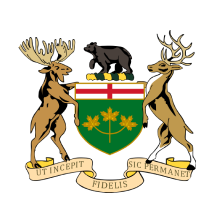Alberta is facing the possibility of a teacher strike or lockout, which could have serious implications for students already affected by COVID-19 school closures. Ongoing negotiations between the Alberta Teachers’ Association (ATA) and the Teachers’ Employer Bargaining Association (TEBA) are critical, as the situation could escalate within days.
ATA President Jason Schilling expressed concern about the anxiety and uncertainty surrounding the negotiations. “I know this causes anxiety and uncertainty, and people are unsure what’s going to happen,” he said. “Teachers don’t want to strike. They want to be in the classroom with their students.”
The funding issue is at the heart of the dispute. Alberta reportedly has the lowest per-student education spending in Canada, at approximately $9,000. This figure is nearly $5,000 less than Ontario’s spending. Premier Danielle Smith contends that provincial spending is closer to $12,000 to $14,000 per student. She suggested that if insufficient funds reach classrooms, the responsibility lies with elected school boards.
“We’re on the brink of strike, and a lot of the issues at the heart of that is the management of the classroom, which we’ve delegated to school boards,” Smith stated. “We’re spending about $12,000 to $14,000 per student on a classroom. That should be more than enough to have a teacher and an education assistant in every single classroom.”
Smith has indicated a willingness to take more control if necessary, even suggesting the possibility of taking over tax collection from municipalities. However, Schilling countered that the province’s regulations prevent school boards from overspending. He emphasized that the government should be aware of how funds are allocated to school boards and how they are spent, particularly on administration, which is capped at four percent.
The ATA has reported a 95 percent strike vote from its members, with potential picket lines set to go up before October 7. Conversely, TEBA could lock out teachers as early as Friday. TEBA, which negotiates on behalf of school boards, is primarily composed of government appointees, as elected school boards lost significant bargaining power years ago.
In addition to financial concerns, teachers are also troubled by issues such as a government mandate requiring libraries to remove materials deemed not “age-appropriate.” This has led to discussions on social media about teachers potentially removing books from classrooms until they can be properly categorized. One teacher expressed frustration, stating, “I’m quite sure I’d have to pull The Cat in the Hat from my classroom bookshelf. Thing 1 and Thing 2 are clearly non-binary. How would I ever answer the question ‘are they a boy or girl’?”
Schilling voiced his concerns about the implications of such policies, particularly for students. “It’s highly concerning to me – and I’m a high school English teacher – to think that books are being boxed up and put away and children aren’t allowed to read them until boards sort out their policies around the ministerial order.”
The ongoing conflict between teachers and the government has created a tense atmosphere, reminiscent of the last major teachers’ strike in 2002, which lasted 20 days and ended with a government back-to-work order. As negotiations continue, the stakes remain high for both educators and students in Alberta.

 Canada News
Canada News

 Yahoo Canada
Yahoo Canada The Calgary Herald Opinion
The Calgary Herald Opinion Calgary Herald
Calgary Herald CBC News
CBC News Local News in Ontario
Local News in Ontario Canadian Occupational Safety
Canadian Occupational Safety CTV News
CTV News  The Province
The Province The Richmond News Business
The Richmond News Business National Post
National Post The Christian Post
The Christian Post